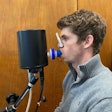
Pirfenidone, a drug currently approved for idiopathic pulmonary fibrosis, may offer a powerful new approach to treating viral exacerbations in patients with chronic obstructive pulmonary disease (COPD).
In the study, “Pirfenidone Mitigates Transforming Growth Factor-β-Induced Inflammation After Viral Infection,” researchers found that pirfenidone effectively reduced inflammation and viral load in mouse models of COPD triggered by the influenza A virus (IAV) infection. The study, which was published in the American Journal of Respiratory Cell and Molecular Biology, focused on the role of transforming growth factor-beta (TGF-β), a molecule elevated in COPD that suppresses immune responses and promotes lung fibrosis. Elevated TGF-β levels were shown to worsen viral infections by dampening the body’s antiviral defenses.
“Compared to steroids, pirfenidone reduced disease severity, lowering both virus replication and airway inflammation without reducing the immune response, which is what steroids do,” said Belinda Thomas, MD, in a news article for Australia’s Hudson Institute for Medical Research. Dr. Thomas is a research scientist for Monash University in Melbourne, which partnered with Hudson Institute for the study. “Steroids are really packed with adverse effects, but there’s been nothing to replace them until now, and we believe pirfenidone is an exciting option.”
Researchers used murine models with lung-specific TGF-β overexpression or chronic cigarette smoke exposure, followed by IAV infection. Pirfenidone was administered orally either before or after infection. Inhaled pirfenidone was also compared to inhaled glucocorticosteroids (GCS).
Unlike traditional GCS, which can further suppress immunity, pirfenidone counteracted the harmful effects of TGF-β. When administered either before or after infection, pirfenidone reduced airway inflammation and improved immune responses. Notably, inhaled pirfenidone outperformed inhaled GCS in reducing both viral replication and lung inflammation.
The study highlights the potential of inhaled pirfenidone as a preventative therapy, especially for COPD patients vulnerable to severe viral infections.
“We have a robust preclinical model showing that it works, and there is likely to be a lot of interest in repurposing pirfenidone in COPD,” Dr. Thomas said. “Steroids are commonly used, and people just accept the fact that they have all these limitations because people don’t think there is anything else. Pirfenidone was really hiding in plain sight — people were excited that it was stopping or slowing fibrosis, but until now, no one had anticipated that it could have this important extra benefit.”






















